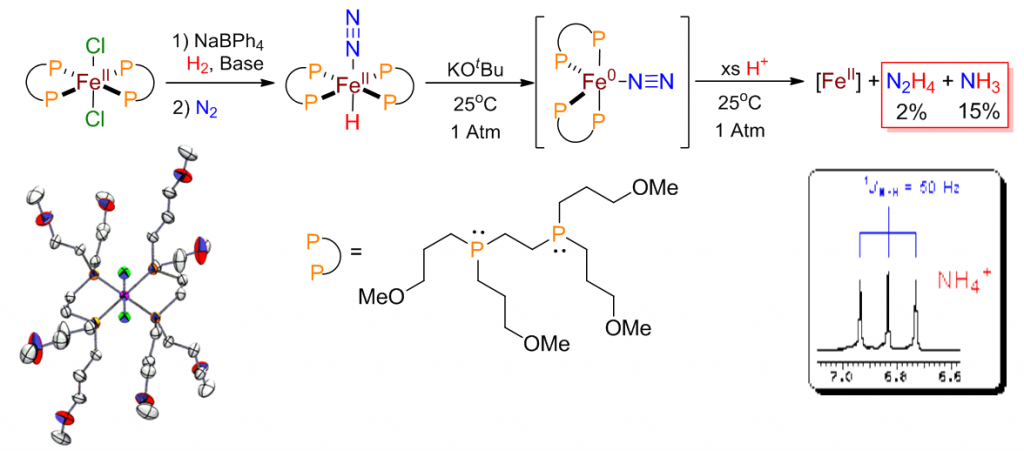Inorganic Synthesis and Catalysis
New Phosphine Complexes
Phosphines are an essential piece of many modern catalysts. The phosphine ligand has dramatic electronic and steric influences of the metal center that are essential for selectivity and activity. Our research focuses on designing and screening new phosphines for both inorganic and organometallic catalysis.
Approximately 2% of all man-made power on earth is expended producing ammonia from dinitrogen at high pressures and temperatures in the Haber-Bosch industrial process. The primary use of ammonia is fertilizer – a necessary additive to soil for growing crops –currently supporting half the world’s population. Nature has found a way to do dinitrogen reduction at standard pressure and temperature for a minimal energy input using the nitrogenase enzyme. Our goal is to build a better catalyst for dinitrogen reduction to ammonia by developing iron complexes that can perform the chemistry more like nature does – at standard temperature and pressure.
We are exploring water soluble iron complexes to coordinate and reduce dinitrogen to ammonia. The mechanism and intermediates of this reaction are being explored to provide insight into designing new and better systems.

Nearly 20% of the US natural gas supply is contaminated with N2 levels above the energy industry’s limit of 4%. Unlike other gaseous contaminants, N2 is not easily separated from CH4. We have previously reported a water-soluble Fe(II) tetra-phosphine complex capable of pressure-dependent N2-binding behavior. However, this complex degrades too rapidly via ligand exchange for it to be industrially viable. We hypothesize that a macrocyclic analogue will possess the stability required for industrial use.

Transition Metal Catalyized Cyanohydrin Hydration
Acrylic monomers are common reagents used in the synthesis of many household materials including paints, boot linings, and PlexiglasTM, aka PMMA. Over several million kilograms of methyl methacrylate, the monomer to PMMA, are produced annually. The industrial synthesis of methyl methacrylate produces a stoichiometric amount of ammonium bisulfate (NH4HSO4), an unusable industrial waste product. Our group is developing an alternative, transition metal catalyzed route that utilizes α-hydroxycyanohydrins as starting materials and avoids the use sulfuric acid (the source of NH4HSO4).
Because cyanohydrins are in equilibrium with hydrogen cyanide (HCN) and their corresponding ketone, many transition metals become poisoned by cyanide, thus decreasing their catalytic activity. To circumvent this problem, our group uses late transition metals that coordinate cyanide reversibly and fast catalyst kinetics for unprecedented yields of amides from cyanohydrins.


